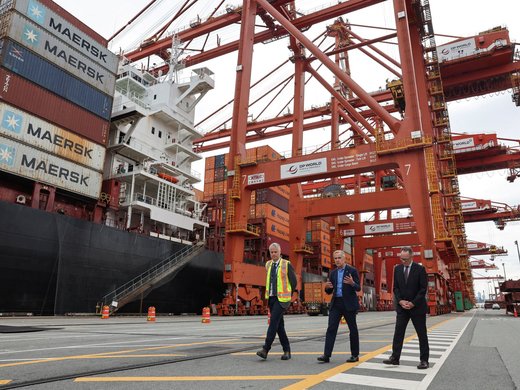The United States is cutting and undermining official US data across a wide range of domains, eroding the foundations of evidence-based policy making. This is happening mostly under the radar here in Canada, buried by news about US President Donald Trump’s barrage of tariffs and many other alarming actions. Doing nothing in response means Canada accepts blind spots in critical areas. Instead, this country should respond by investing in essential data and building the next generation of trusted public intelligence.
The United States has cut or altered more than 2,000 official data sets across domains including science, health, climate and development sectors, according to the National Security Archive. Deep staff cuts across all program areas effectively cancel or deeply erode many other statistical programs.
In addition, decades-long programs that reinforced trust in the statistical system have been cut, including the Federal Economic Statistics Advisory Committee and the Bureau of Economic Analysis Advisory Committee. These committees provided expert advice and contributed to government transparency. The Economist notes that America may soon be unable to measure itself properly as a result.
Cuts to the National Oceanic and Atmospheric Administration’s Arctic monitoring programs, such as those tracking sea ice and snow, weaken Canada’s ability to assess shared climate risks and global shipping impacts.
This will have long-lasting effects on the ability of US policy makers to track and respond effectively to the needs of their citizens. The impact is also spreading beyond the United States and will make it harder to monitor and address a wide range of Canadian and global issues.
For example, reduced trust in US economic indicators undermines Canadian forecasting at a moment when there is extra uncertainty. Cuts to the National Oceanic and Atmospheric Administration’s Arctic monitoring programs, such as those tracking sea ice and snow, weaken Canada’s ability to assess shared climate risks and global shipping impacts.
Even before this data purge, official US data methods were becoming less relevant and reliable. Traditional government surveys lag by weeks or months and face declining participation. This lag proved particularly problematic during the COVID-19 pandemic and also now, when economic data with a one- or two-month lag is largely irrelevant for tracking the real-time impact of constantly shifting Trump tariffs.
How to Fill Critical Data Gaps
With deep ties to the United States, Canada needs to take action to reduce these critical blind spots. This challenge brings a major strength into the picture: Canada’s statistical agencies have strong reputations as trusted, transparent information sources.
First, Canada should strengthen its data infrastructure. Official Canadian data suffers from similar delays and declining response rates as in the United States. Statistics Canada needs a renewed mandate and stable resources to produce policy-relevant indicators, especially in a timelier way, and in areas where US data has been cut or compromised.
Second, Canada could also act as a trusted place to store vulnerable indicators — inventorying missing data sets, archiving those at risk and coordinating global efforts to reconstruct essential metrics.
Third, Canada has an opportunity to lead in shaping the next generation of trusted and better public-interest intelligence. By adding up the digital traces we produce with every click, purchase, post or movement, and doing so at scale using AI, analysts can generate real-time and harder-to-manipulate insights into our economies, the environment and so on. Institutions around the world have already started experimenting with these newer metrics, as I illustrate in this CIGI report. For example, online job postings tell us about the real-time labour market and about how economies are responding to artificial intelligence (AI) adoption. Anonymized credit card data helps estimate consumer demand. News references to disease in multiple languages around the world can reveal where outbreaks might happen next.
The latest advances in AI expand the possibilities. Large language models can extract insights from text and images. They can now categorize customs manifests into up-to-date supply chain data, summarize public health alerts, or convert satellite images into maps of deforestation or economic circumstances in remote, previously data-poor areas. These advances allow Canada to lead in building public-interest intelligence not only from traditional survey and administrative data, and not only from numeric data, but also from previously unusable, unstructured information sources.
These new types of data do not replace foundational, trusted official statistics. But when official data is undermined, digital data can validate or challenge it, fill gaps or add detail. Each digital data set alone is not representative, but together they help paint a more complete and timelier picture for decision making than was possible even a few years ago. Canada could further lead and support the creation of data collaboratives, taking a variety of these digital data sets and pooling them for public-interest use.
Failing to respond to Trump’s assault on reliable data risks weakening the foundations of evidence-based policy making not only in the United States but also in Canada and globally. By investing in both traditional and next-generation data, Canada can help partly fill critical gaps and set the standard for trusted, transparent and timely public-interest intelligence.




